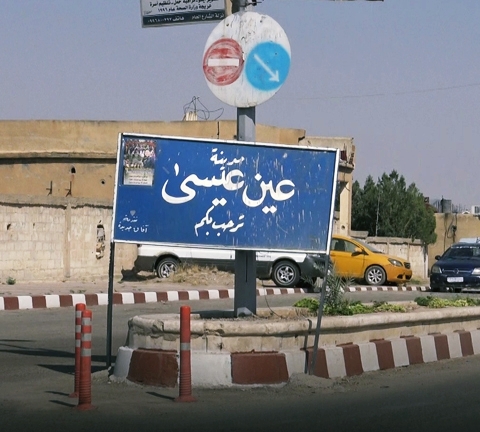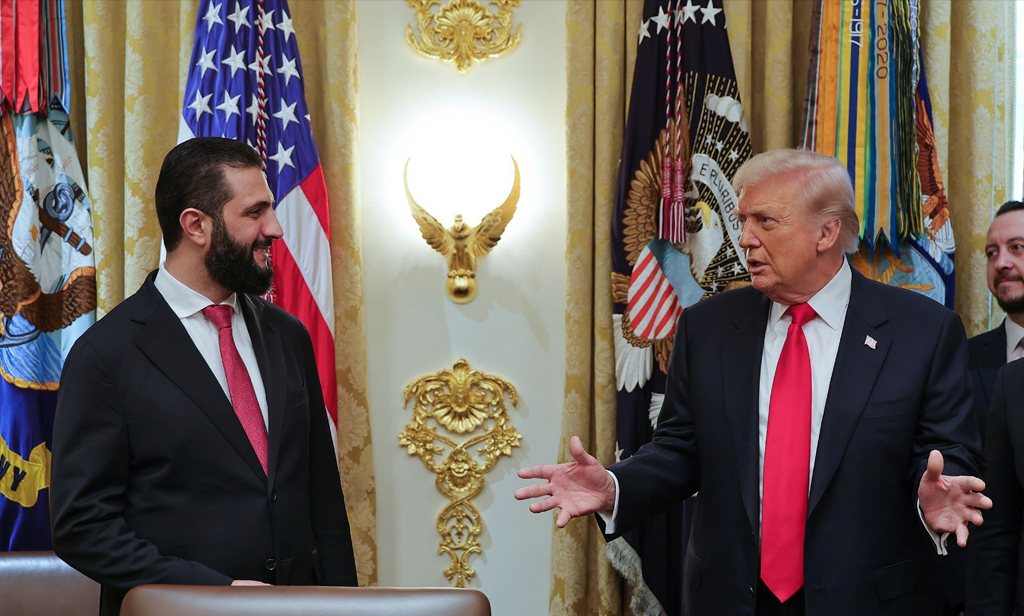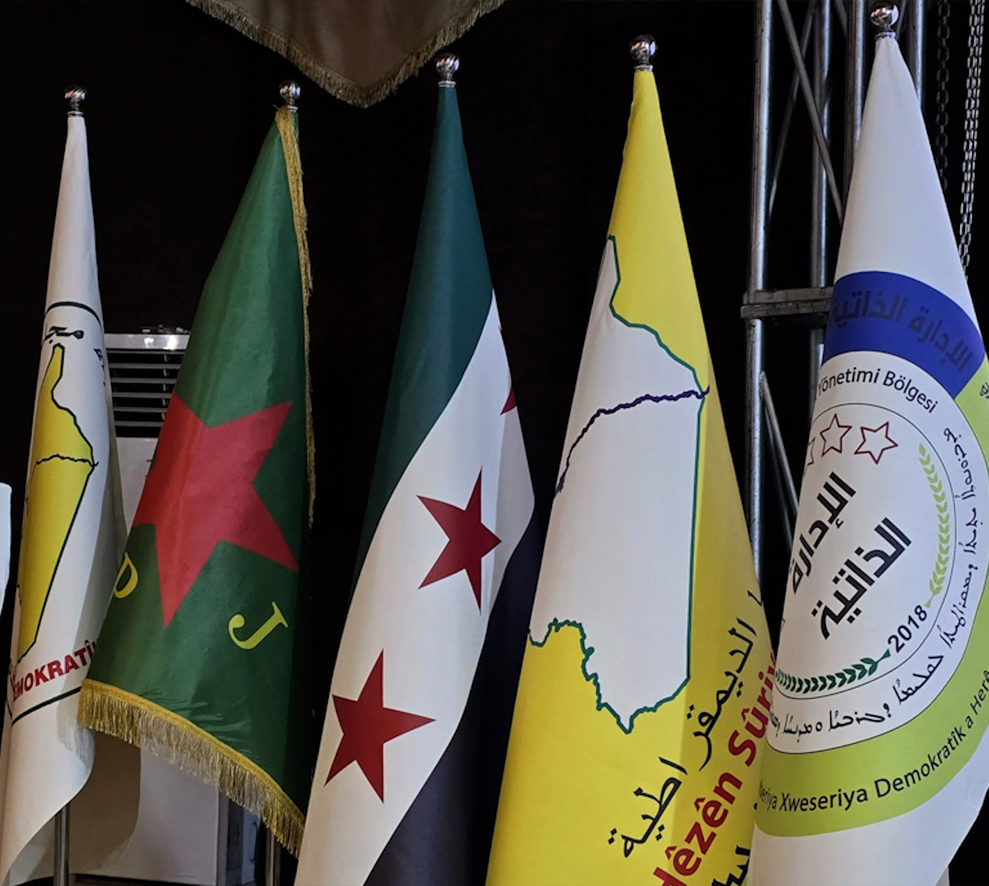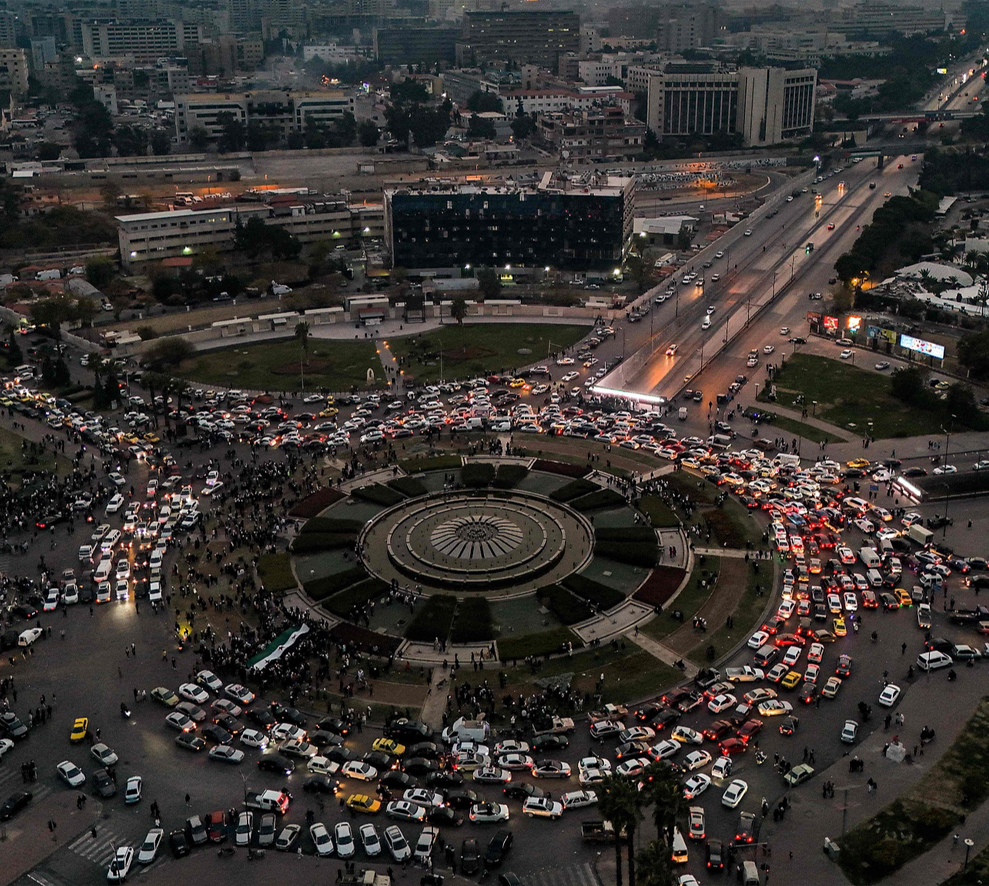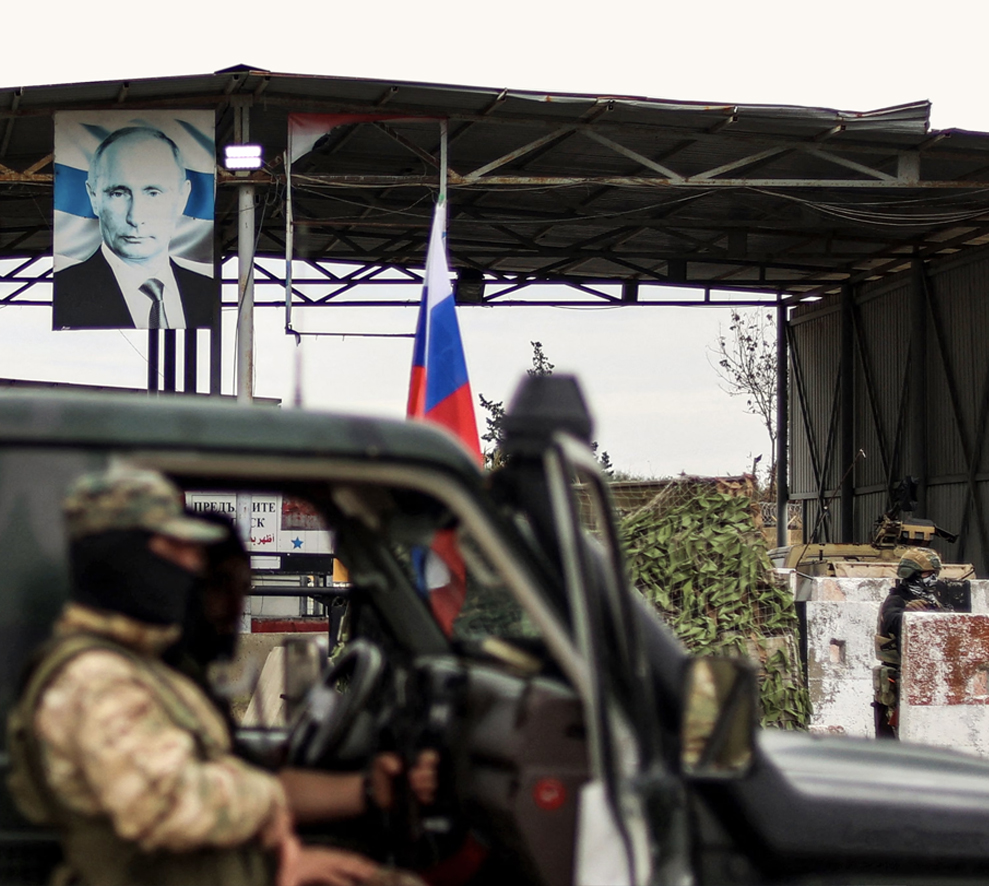The war against ISIS in Syria led to a change in the scope and shape of the areas of influence on the map in favor of the Syrian government and the regular army in terms of area and administrative control. However, at the same time, it has created areas isolated from the sovereign decision of Damascus in light of a complex military scene in terms of the multiplicity of forces and factions in conflict, in conjunction with conflicting agendas at the regional level in their contact with the Syrian crisis, either directly through its military elements or through its relationship with one or more of the factions that are not affiliated with the regular forces and usually hostile to them.
In late November 2020, the town of Ain Issa in the northern countryside of the Raqqa governorate witnessed new escalation following mutual bombardment between the Syrian Democratic Forces (SDF) and the Turkish-backed Syrian National Army. Thus, the ceasefire in northeastern Syria, which was included in an agreement signed in October 2019 between Russia and the United States on the one hand and Turkey on the other hand, was violated. Other regions have not been immune to this intermittent escalation since July 2020, as the city of Manbij in the northeast of Aleppo governorate and the city of Tal Tamr in the north of Al-Hasakah governorate have witnessed similar clashes.
Recent events invoke a comprehensive review of the map of the Syrian military influence, especially in northeastern Syria, with the aim of answering the following question: How long will the security and geostrategic stalemate continue in the areas not under the control of the Syrian government? Is it a stalemate or slow military changes?
May 4, 2017 marks the creation of this state, in which Russia, Turkey and Iran, the countries sponsoring the Astana talks in its fourth edition, agreed to a memorandum of understanding to establish de-escalation zones in which military action between the regular Syrian army and the armed opposition factions would stop, with exclusion of terrorist factions such as ISIS and Tahrir Al-Sham (formerly Al-Nusra). As for these areas, they are Idlib governorate, and areas in Hama, Latakia, and Aleppo. Since then, with Russian assistance, Damascus has managed to put pressure on the militants through military skirmishes and organizational pressures that led the armed factions to leave - after giving up their heavy and medium weapons - for Idlib Governorate.
The establishment of de-escalation zones coincided with military operations carried out by the Turkish forces and the military factions loyal to Turkey. The operations of Euphrates Shield (August 2016 - March 2017) and the Olive Branch (January 2018 - May 2018) led to officially control Afrin and Jarablus regions, along with Idlib which includes many pro-Turkish factions, thus making them subject to Turkish supervision.
Consequently, the focus is currently on the northeastern region of Syria, because the areas to the northwest or west of the Euphrates are under Turkish control, with the exception of the areas of Tal Rifaat and Manbij that are under the control of factions loyal to the SDF.
The argument that Ankara is publicizing for its military movement inside Syria was and remains the same, which is the elimination of terrorist organizations that include alongside ISIS - according to the Turkish perspective - the Kurdish People's Protection Units, which constitute an important part of the SDF, with the aim of establishing a safe region in northern Syria. However, it is supposed to be 32 km deep in northeastern Syria (from the east of the Euphrates River to the Iraqi border), in order to secure the safe return of Syrian refugees in Turkey after conditions that include offsetting terrorist organizations have been created.
Ain Issa as a sketch
Former US President Donald Trump announced in December 2018 the withdrawal of US forces from northeastern Syria. However, the actual withdrawal took place after about a year, in October 2019, the matter which allowed the Turkish forces and the armed factions loyal to them to expand in many areas under the cover of a new military operation called "Peace Spring" following the security vacuum left by the aforementioned withdrawal. For example, the towns of Tal Abyad and Ras al-Ain were taken over as soon as the US withdrawal took place.
It is worth noting that the American withdrawal was not in the direct sense of the word, but rather it could be described as a tactical repositioning in northeastern Syria. This is similar to what happened in November 2020 when the Acting US Secretary of Defense, Christopher Miller, announced that the date for the withdrawal from Syria had come, yet it only took place in a limited way. If we want to infer a conclusion here, it can be said that the importance of the northeastern region for the United States is only about the oil wells in Hasakah and Deir Ezzor - the control of which was emphasized by Donald Trump in more than one occasion in late 2019 - but rather about the possibility of providing minimum negotiation on the scope of implementing the American strategic vision for this tense Middle Eastern focus.
The strategic orientations of the various international powers involved in the Syrian military file have become relative by virtue of the context in which the events have taken place. For example, the United States favored the overthrow of the Syrian regime at the beginning of events during the Barack Obama era, but with the advent of the Trump administration and the Russian military intervention, the war on terrorism escalated. All this, in total, led to a change in the plan to merely ensuring the American military presence on the ground through periodic redeployment, while maintaining air cover under the umbrella of the international coalition led by Washington.
On the other hand, Moscow seeks to keep the slogan "preserving the territorial integrity of the Syrian state" raised in spite of the concrete awareness of the impossibility of implementing it; due to the Turkish presence in the first place, in addition to the relentless pursuit by Russia to maintain a certain balance in the relationship with Turkey for fear of any sudden reversal in the interest of the West in general. This is unlikely to happen in the near term due to the presence of many thorny issues between Turkey and Western countries regarding the conflict in Libya, the Mediterranean crisis, and others.
The slogan raised by Moscow is, for the most part, to satisfy the Syrian government and as a justification that the latter can use in the face of some voices that may criticize the Russian presence in general. Consequently, this Russian position does not prevent the Turkish incursion into Syrian territory, but rather contains it. The Peace Spring operation, which came within the framework of the Turkish military movement that has extended since 2015, did not last for more than twenty days, ending with the October 2019 ceasefire agreement referred to above.
This peculiar scene suggests that Russia, and the Syrian government understand the Turkish fears regarding the SDF. However, this does not deny that Damascus does not view the Turkish military intervention since it began as an occupation of its lands, and at the same time it does not accept the authorities of the Autonomous Administration and the SDF because of their association with American support and their refusal to coordinate with Damascus. Thus, the creation of a state of security stalemate is for the sake of Russian coordination between the conflicting parties. An example of this is the recent truce that Moscow sought to impose in early March 2020 between Damascus and Ankara after the escalation of military clashes in the areas north of Hama and southern Idlib, especially in the town of Khan Sheikhoun between the Turkish and Syrian armies.
Returning to the escalation in Ain Issa, which is considered the administrative and political capital of the Autonomous Administration, the SDF refuses to hand it over to the Russians and the Syrian army. This scenario is appropriate for Turkey which is seeking to expel the SDF from the city, even if it is replaced by the Syrian forces, which will eventually refer to the Russian coordination channel. This has led to the withdrawal of the Syrian forces from the town last December, and the Russian military forces refrained from escorting civilian vehicles along the M4 highway, possibly to pressure the SDF, which faces the Syrian National Army and Turkish artillery alone, in order to hand over the city.
The SDF fears to lose Ain Issa, not only because of its political symbolism, but also because of its strategic location on the international highway M4. If the city falls into the hands of the Turks - as happened to Afrin and Tal Abyad earlier, after it was handed over to the Syrian forces and the Russian military police - the Autonomous Administration will lose the link in controlling its areas extending from northeastern Aleppo to Hasaka governorate and up to the borders with Iraq. It also seems that the United States participated to support the position of the SDF, through the sudden visit of the commander of American forces in the Middle East, General Frank McKenzie, to Hasakah governorate on December 22, 2020, and his meeting with the head of the SDF, Mazloum Abdi, the matter which could be read as an inconvenient action to both Moscow and Ankara.
It seems that the Kurdish reliance on the role of the new administration of Joe Biden has doubled after the latter's appointment of Brett McGurk as the general coordinator for the Middle East and North Africa at the National Security Council at the beginning of this month. McGurk is one of the most vocal critics of the Turkish military intervention in Syria, and this was clearly evident when he held the position of special envoy for the international coalition to fight ISIS under Barack Obama, as he resigned from this position in 2018 following Trump's decision to withdraw American forces from Syria.
But what guarantees that events will not accelerate and develop in terms of military escalation before the anticipated American action, if it occurs? On the one hand, the regular Syrian forces are strengthening their presence in the western countryside of Raqqa, manifest by sending dozens of militants on January 19, in addition to besieging the Kurdish forces' sites in the eastern countryside of Aleppo. This was matched by the fact that the SDF, through its security arm, "Asayish", surrounded the Syrian army forces in Qamishli and its locations in Hasaka governorate. The Russian response to this was to send 300 Russian military police to those areas, in addition to the Tal Tamer and Ain Issa areas, to reinforce the joint observation points with the Syrian army, as Russian officials put it. These recent reinforcements from the Russian side may lead to an increase in the SDF rejecting the Russian mediation to calm and return matters to normal. On the other hand, clashes between the pro-Ankara factions and the SDF continue in the countryside of the town of Ain Issa. These factions are in principle not concerned with any results of the negotiations between the Kurds, Syrians and Russians, but the concerned is rather the Turkish army, which is linked by a communication channel – though not effective enough - with Russian forces.
Finally, we can conclude that the situation in northeastern Syria is extremely fragile in terms of security, and that the equation will change in a semi-qualitative manner with Biden taking office towards imposing a stalemate while the military friction remains on the lines of contact and turning to fight ISIS cells in the eastern surroundings of Deir Ezzor. However, it is noteworthy that Turkey might escalate its military activities to control Ain Issa before January 20, in an effort to acquire a new negotiating card to raise in the face of the changes taking place in Washington. Yet, this is not likely especially with the presence of the SDF which could confuse the cards by taking the battle to Qamishli, which, in addition to its security square in Hasaka, is the only stronghold of the Syrian army in northeastern Syria. This was evidenced by the encounter that took place there last December, which called for Russian intervention to end it. However, the fight taking place today between the SDF on the one hand and between the regular forces and the Turkish-backed factions separately on the other, portends an unprecedented and violent escalation, given the ineffectiveness of Russian mediation this time.
Keep in touch
In-depth analyses delivered weekly.

Related Analyses:







